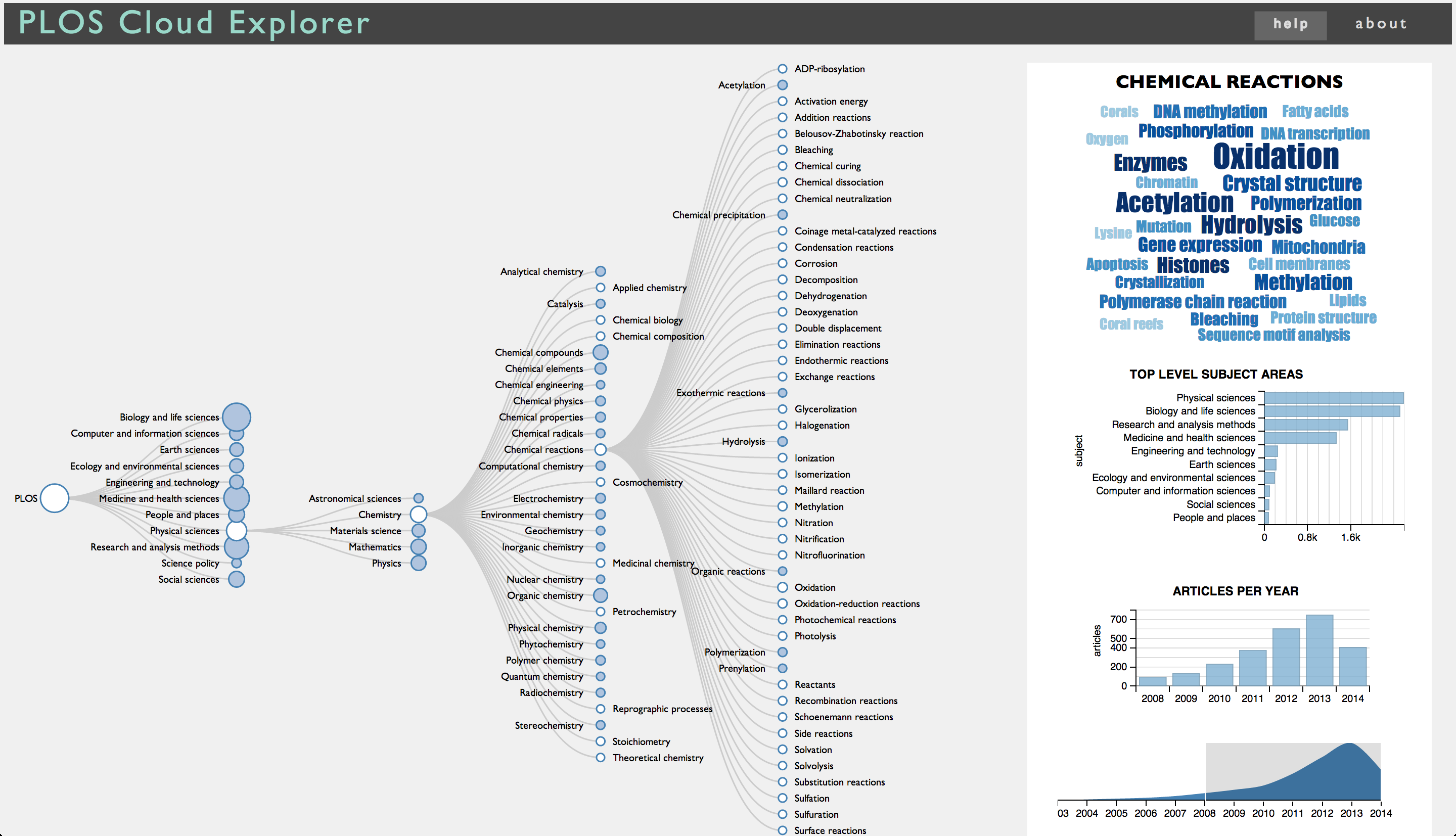Exploring research subject areas
2014-05-29 Archived
Many academic journals describe the articles they publish using topical keywords, which authors can specify ad-lib, or select from a controlled vocabulary provided by the publisher. PLOS stands out in the sophistication of its approach: articles are associated with subject areas from a thesaurus of over 10000 terms, with specific associations established by machine-aided indexing. Probably to avoid overwhelming readers, the PLOS website’s subject area list only shows the first two tiers of a taxonomy that goes up to ten tiers deep. Now, you can explore the PLOS subject areas in all their depth and beauty…
This spring, I took a course at the UC Berkeley School of Information called Working with Open Data. I joined Anna Swigart and Colin Gerber in a class project, setting out to do something neat with open data and scientific research publications. Naturally, we looked to PLOS as a source of open data. As a publisher of open access journals, their articles and metadata are all Creative Commons licensed (CC-BY). They have an open search API as well. When we asked them about the thesaurus of subject areas, PLOS kindly provided us with a copy of the full subject area list.
What we ended up making is a web app that lets you explore what research in PLOS journals is about, how different fields of research are interrelated, and how that has changed over time.
Check it out: PLOS Cloud Explorer.
I’ll leave the details of what this does and how it works for your independent discovery. You can also read our documentation, and find our source code and data, on GitHub.
One of our reasons for making PLOS Cloud Explorer was that the fabulous complexity of PLOS’s classification of research articles hasn’t really been surfaced anywhere. With a visualization and some simple statistics, we can showcase the interconnectedness of research areas. For instance, look at the histogram of top-level subject areas for any node; because each article receives more than one classification, you’ll see that PLOS articles tend to be associated with a mix of different fundamental fields. By the way, the thesaurus is not just a taxonomy, it’s a polyhierarchy: some subject areas belong to more than one higher-level area—such as psychology, which is included under both life sciences and social sciences.
What you see in PLOS Cloud Explorer is based on data about all the articles published in PLOS journals up until we assembled the data set, and represents a snapshot of the PLOS Thesaurus in its current state of evolution. Therefore, we’ll need to update it from time to time to reflect more recent articles and changes in the subject areas [update: refreshed full dataset on 02014-07-21]. We’ll probably also continue to make improvements in the web app as time goes on—such as linking to specific articles.
Update 02014-07-24: This project is the subject of a guest post on the PLOS Tech Blog.
